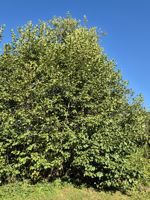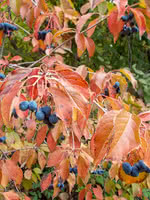Mon-Fri 9am - 5pm Mountain time
Nannyberry vs Mountain Alder
Alnus incana subsp. tenuifolia
Viburnum lentago
CUSTOM GROW
NOT AVAILABLE THIS SEASON - MIGHT RETURN
Mountain Alder is a native cold-hardy shrub or small tree often found along streams and in moist forested habitats. Its nitrogen-fixing ability enriches soils and supports surrounding vegetation, while its extensive root system helps stabilize streambanks and slopes. The fast growth rate allows it to establish quickly on disturbed sites, making it especially valuable in reclamation, restoration, and erosion control projects.
Often forming dense thickets, Mountain Alder enhances habitat quality in riparian and upland areas. It provides food and cover for various wildlife, including birds and small mammals. Recognized as an important species for soil and water conservation, it is well suited for riparian planting, naturalization, and ecological restoration.
Note: We use Sitka Alder for Alnus incana subsp. tenuifolia. This species is also known by many other common names, including Grey Alder, River Alder, and others. Please confirm the scientific name to ensure you are ordering the correct plant.
Nannyberry is a hardy shrub known for attracting wildlife. Its clusters of white flowers and tasty berries are suitable for bees, birds, and other animals.
Nannyberry is also used in urban yards and landscaping. This shrub makes a beautiful ornamental and is small enough to grow underneath power lines. Its berries can be eaten fresh or used in baking and preserves.
Makes a great hedge or privacy screen in an urban yard. Often has great red fall color to complement its spring flowers.

